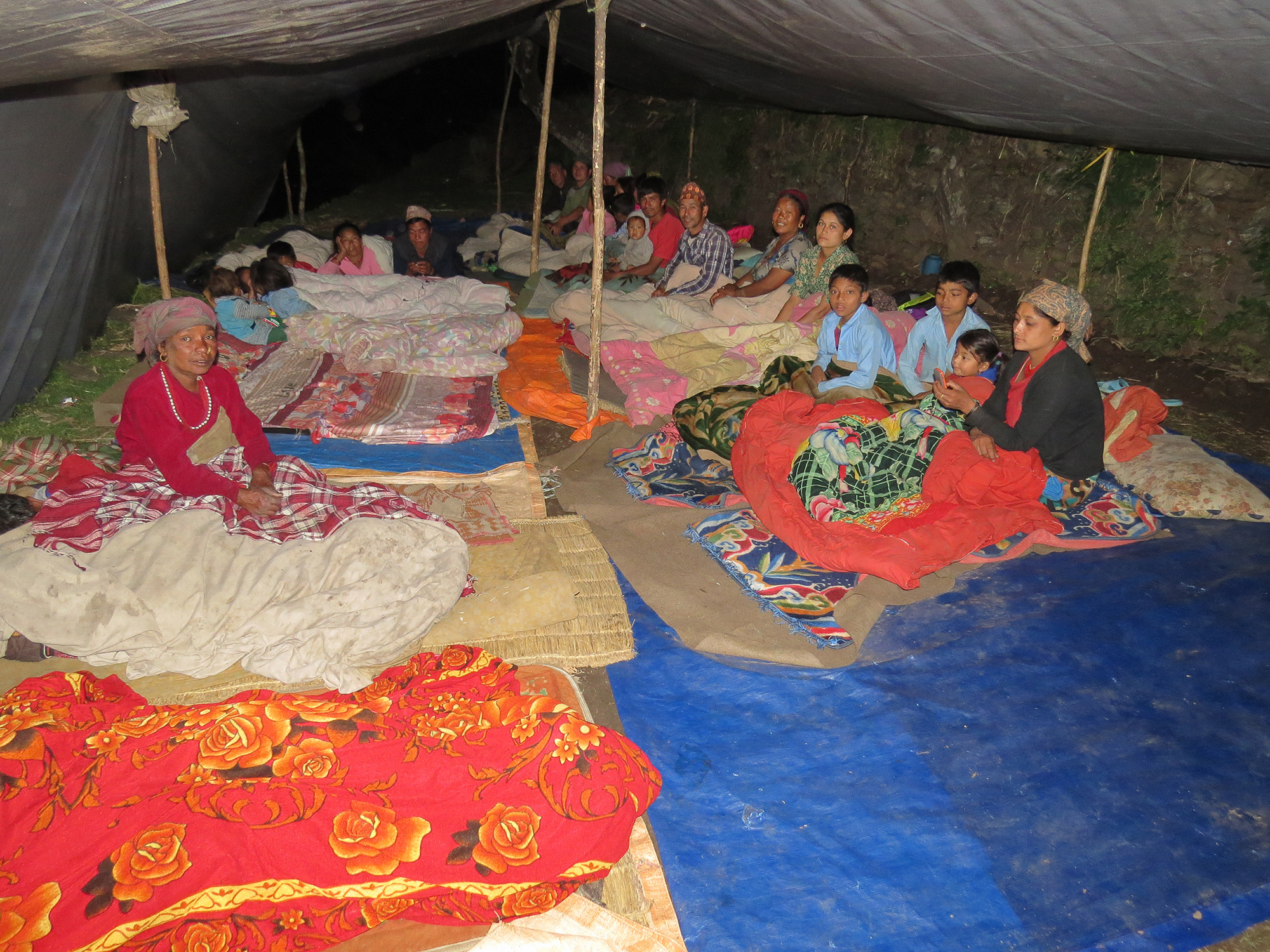Life returns to normal in Basa.
We were able to buy 120 good quality tarpaulins and have them transported, despite the difficulties caused by the poor state of the tracks and paths, and we have the satisfaction of knowing that all the families are sheltered from the monsoon.
The latest e-mail from Yadav (30 July) tells us that the dispensary is running smoothly and that we have purchased additional medicines with the money we had set aside.
It also seems that the damage to the terraces has been kept to a minimum (but we’ll have to wait for the monsoon to end) and the harvest is getting ready. They don’t seem to be worried about food.
Two pieces of good news for the government: the plan to pool all foreign donations before redistributing them (with the consequent risk of ‘evaporation’) has been abandoned in the face of public outcry, and a substantial sum has begun to be distributed for damaged houses (3,000 Rps for partial destruction and 15,000 Rps for total destruction).
Our Association has contacted various organisations specialising in architecture with a view to rebuilding to anti-seismic standards (a wish confirmed to us by Yadav in his recent email).
This reconstruction must also be carried out in an environmentally-friendly way, using local materials, integrating local professionals (even if it means training them) and according to the needs expressed by the residents or their representatives. A number of interesting ideas are being explored: dry stones held in metal gabions, the use of wood (to avoid deforestation, which is a source of landslides), bamboo, etc.
A trip by several of our members is being planned for this autumn to take stock of the damage caused by the monsoon and to meet representatives of other associations (in particular Mary Carroll of the Nepal Foundation) with a view to coordinating our efforts. In the meantime, we are continuing to raise funds; the Association warmly thanks the donors whose generosity enables us to carry out these projects.
B.Simonet, 30/07/2015


